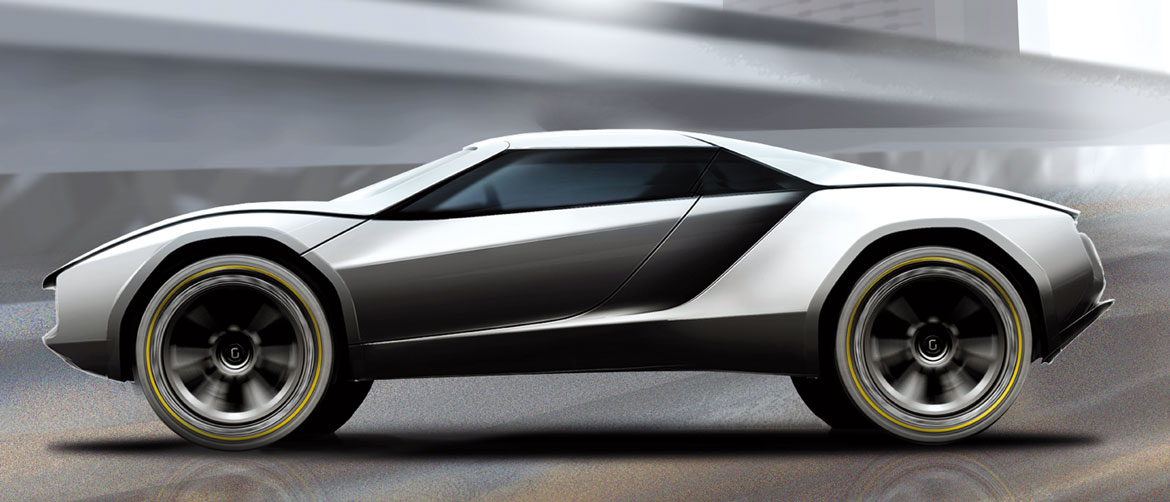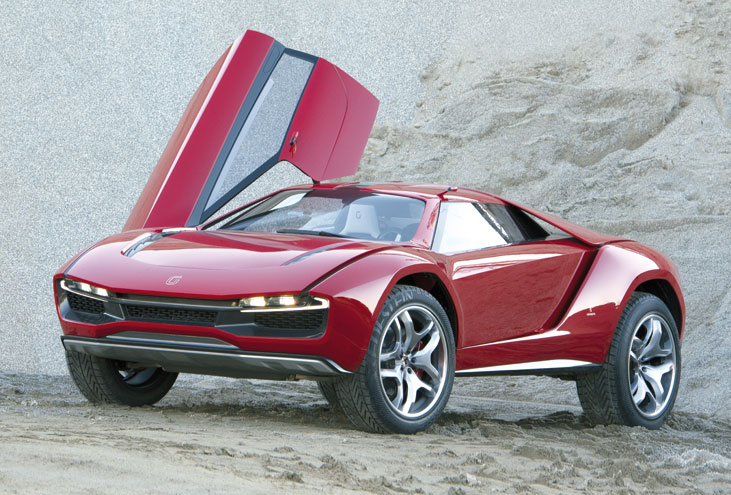At first sight, it looks like a lot of tyre rubber with very little bodywork. The tall Parcour is “designed by the wind, but also by the terrain” says Fabrizio Giugiaro, design director of Italdesign Giugiaro and project leader for this unprecedented coupé.
“It isn’t a Lamborghini, in spite of the fact that it has a number of cues recognisable as belonging to the brand. When we were looking for the right powertrain for this project, we and Walter de Silva decided to pay homage to the Raging Bull in its fiftieth anniversary by using one of its engines.”
Parcour is an extreme concept, and while it has all-terrain capability with four different chassis settings (track, snow, off-road and urban), it definitely is not an SUV – as its coupé profile proves. Its proportions are so sporty that the designers even went so far as to imagine a roadster variant, which was presented as a white static model alongside the car at Geneva.

“We imagined a user free to tackle any type of terrain fearlessly. So the wheels played a fundamental role”, explains Giugiaro.
Overall, the car is actually wide and imposing, but the gashes in the surface contribute significantly to giving it a leaner appearance.
At the front, the clear separation between the bonnet and the wing reveals part of the underlying chassis in a clever ‘now you see it, now you don’t’ surfacing effect, while the A-pillar stands proud of the screen and exploits the same aerodynamic principle used in deflectors on trucks to direct air around the sides of the windscreen towards the flanks. The short overhangs and high appr-oach and departure angles, how-ever, are typically off-road cues.

The sculpted and aggressive but highly aerodynamic tail features two gaping air vents separated by the red “G” of the Italdesign Giugiaro logo, which also conceals the reverse camera, and a deep lower split containing the third stop light, while the linear taillights almost seem to float weightlessly.
The two-seater cabin cocoons the occupants in an embrace of light coloured premium leathers, sophisticated trim and high-tech materials. With everything within immediate reach of the driver’s hands, the cabin almost creates the impression of wearing a large multifunctional helmet.
“We’re used to cars in which the windscreen is far from the driver seat”, continues Giugiaro, “so we have brought it closer to improve visibility”. The deep binnacle over the steering wheel includes displays linked to the lateral and rear cameras, “we realise that it isn’t easy to get used to a view through monitors – it is a huge generational leap – but it’s also an innovation that our company believes in, and which it had already begun to explore in 2002 with the Corvette Moray”.

The lines of the cabin are simple and the instrumentation is a driver-oriented. The seats are fixed to the floor, with the squab at the same height as the sill which, in turn, is partially covered by the upholstery of the side bolster, while the pedals, steering wheel and backrest are adjustable to suit the driver.
The upper part of the dash is trimmed in dark leather
embossed with a carbon fibre effect pattern, while the textile used for some of the interior trim and for the luggage set in the front compartment is produced by Lanificio Cerruti.
The article continues in Auto&Design no. 201











